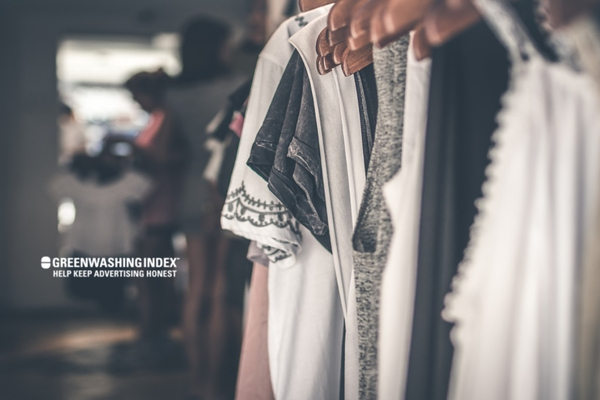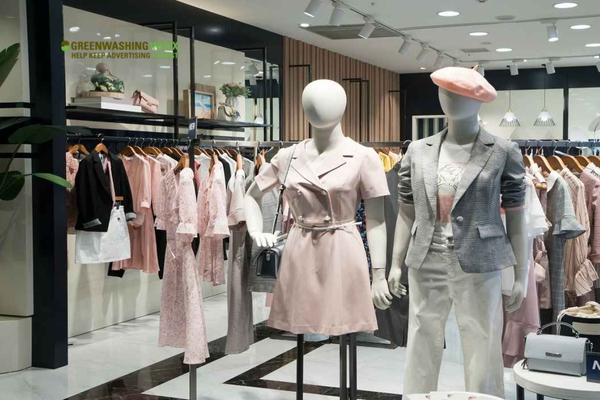

Have you ever thought about where your clothes come from or what happens to them after you’re done wearing them? If you haven’t, it’s time to start. The clothes we wear every day have a big story behind them—one that involves our planet and its future.
That’s right, I’m talking about sustainable clothing, and trust me, it’s a topic that will tug at your heartstrings and make you look at your wardrobe in a whole new light.
So what is sustainable clothing? In simple terms, it’s about choosing clothes that help protect our environment, support fair working conditions for the people making them, and don’t hurt our wallets in the long run. Sustainable clothing means picking quality over quantity—it’s the kind of fashion choice that keeps giving back to Mother Earth instead of just taking away from her.
When I talk about clothes, there’s something more to them than just fashion and style. It’s how they are made and what they mean for our planet. That leads me straight to sustainable clothing. This is a topic that means a lot, both to you and Mother Earth.

Have you heard about sustainable clothing? Sustainable fashion is all about making clothes in a way that is good for the environment, for the people who make them, and for those who buy them.
It takes care of our planet by using resources like water and energy in smarter ways. People making these clothes get fair pay and safe workplaces. And when we wear them, we know they last a long time and don’t harm the earth.
Let’s break it down:
Nowadays, more people want to wear eco-friendly clothes. But why is this happening? Many folks are learning how our shopping choices affect Earth. They hear about climate change and pollution on the news or social media and want to help fix these problems.
Here’s what’s driving this demand:
Everyone can join this eco-friendly movement! When you choose an outfit made with love for the planet, you’re doing your part too! How amazing is that?
Also Read: Bamboo Fabric: Sustainable Fashion’s Savior or Slip-up?
Fast fashion has swept through our lives like a whirlwind of ever-changing trends and seasonal must-haves. But behind the allure of cheap, trendy clothes lies a stark reality that we can’t ignore.

Let me tell you how fast fashion is eating up new resources. Fast fashion means making and selling lots of clothes really cheaply so people can buy more all the time. But to make all these clothes, companies need tons of stuff like cotton, oil for polyester, and water. Most of this stuff comes straight from nature – that’s what we call ‘virgin resources’.
Unfortunately, using all these virgin resources is not good at all. It means we’re running out of them way too fast because we’re not giving nature enough time to replace them. Think about water – it’s super important, right? Well, to make just one cotton shirt, it can take up to 2,700 liters of water. That’s the same as what you’d drink in about 2 and a half years!
And cotton isn’t just thirsty; it often gets sprayed with lots of chemicals to help it grow better – but these aren’t great for our planet either because they can hurt animals and plants. Plus when we keep taking oil out of the ground to make synthetic fibers like polyester, we leave scars on Earth that aren’t easy to fix.
Every time we pick something made from new materials that takes a lot from Earth or harms her in its making process, that’s us ignoring sustainability – which means looking after our planet so it can keep looking after us.
Now let’s talk about your clothes’ carbon footprint – this means how much they contribute to climate change because of greenhouse gases like CO2 being released into our air every step they take through their life.
From planting the cotton seeds till you take your t-shirt home and every time you wash it – there are CO2 emissions happening each step:
Altogether this makes up a huge amount which collects over time causing warmer climates and weird weather patterns impacting folks across the globe which isn’t nice at all!
So why should you care? Sustainable clothing tries fixing these problems by being kinder on earth starting from how materials are grown or collected without taking too much or harming our environment – all the way to how things are packaged using less nasty stuff plus offering ways to reuse or recycle garments instead of forgetting ’em after few wears resulting in a lot of unnecessary waste.
You see now why sustainable clothing matters. It’s high time we started thinking long-term about what happens behind the scenes when getting dressed each day for the sake of smiley faces future generations will still enjoy an awesome Earth just as much!
Also Read: Sustainable Halloween: Throw a Fun Costume Swap Bash!
When I think about the clothes we wear every day, it’s easy to forget just how much they impact our world – but they really do! This is especially true when it starts to hit hard that our planet needs us to make smarter choices now. That’s why I want you to know all about sustainable clothing and why it’s such a big deal.
The first thing on my mind is how sustainable clothing plays a huge role in saving resources for our kids and their future. Every time someone decides to buy a piece of clothing that’s made in a way that’s good for the earth, they’re saying yes to giving Mother Nature a bit of a break.
Just by choosing outfits made with care for the planet, we help keep those natural treasures around longer. How cool is that?
Next up, let’s chat about carbon footprints because this is another massive reason why I’m all for switching up your wardrobe with more eco-friendly fashion pieces.
Here comes the silver lining: when you pick sustainable threads:
This step down on emissions can mean healthier air and slowing down climate change – giving us more time to address this hefty challenge facing us.
With every laundry load and over time while wearing them out and about, non-sustainable clothes might let loose tiny bits of harmful substances into rivers and oceans where fishies swim.
If we’re serious about keeping those aquatic friends safe and sound along with their home sweet home – then thinking eco-fashion makes sense:
Picking fashionable items mindful of marine life could mean big things! It’s an invitation not only to help keep waters clear as crystal but also to ensure creatures below waves aren’t harmed by avoidable waste products.
And there you have it – three amazing perks for starting sustainable fashion today! It can feel pretty awesome knowing each cool shirt or comfy pair of jeans does its part against some major issues out there right now.
When I think about sustainable clothing, it’s not just about the Earth, but also about the people who make the clothes. There’s a big ethical side to this kind of clothing. It’s all about making sure workers are treated right.
What does this really mean?
It means that people working in places where clothes are made should have good working conditions. They should work a fair number of hours and get paid enough to live on. Sadly, that’s not always the case in the fashion industry.
Many clothes we wear come from factories where workers don’t have a good life. But sustainable clothing brands want to change this. They work hard to give these workers a better deal.
So, by choosing sustainable clothing, I am saying “yes” to supporting fair and safe jobs for those who make my clothes. It makes me feel like I’m doing something good for other people, not just for nature.
There’s another important thing sustainable clothing does – it helps animals! Traditional ways of making clothes can hurt animals or use parts of them without caring much about their well-being.
Let me paint you a picture:
Now with eco-friendly fashion, brands try not to do things that can harm animals. They use materials that don’t come from hurting any living creature.
That way, when I pick out a piece of eco-friendly fashion, I know no animal was harmed for my style – and that feels pretty great!
Okay, let’s talk about why it’s better to go for long-lasting clothes instead of just buying stuff because it’s cheap or trending right now:
Slow fashion is kind of like an answer to wasteful shopping habits where everyone rushes into buying cheap things they’ll only wear once or twice before tossing them out.
By embracing pieces that last longer (trust me), everyone helps slow down fast disposable trends – which really aren’t cool for our planet (or our wallets in the long run). It’s all about being smart with what I buy and rocking my style responsibly!
Also Read: Book Recycling Magic: 6 Ways to Upcycle Your Tomes
As someone who cares deeply about our planet, I like to think about what I wear and the impact it has on the environment. That’s why I want to talk about sustainable clothing. This is a way of making and buying clothes that do good for the Earth.

When it comes to making clothes in a way that’s kind to the Earth, ethical manufacturing is at the heart of it all. This means ensuring everyone involved in making our clothes is treated well and paid fairly – that’s what we call the fair-trade principle.
Imagine you’re buying a new shirt. With ethical manufacturing, you can feel good knowing that the person who made your shirt had a safe workplace and earned enough money to take care of their family. Companies who follow these rules care more about people and the planet than just making money.
By choosing sustainable clothing, you’re part of a movement that wants better for workers and our world. It’s like giving a thumbs-up to companies doing things right and encouraging more brands to follow suit.
Now let me tell you something cool — old clothes can become new treasures! That’s right; when we go thrifting or upcycling, we breathe new life into pre-loved clothes. Thrifting means buying used clothes instead of new ones, while upcycling is when you take old garments and turn them into something fresh and exciting.
Here’s why it’s wonderful: every piece of clothing has its own story. Instead of adding more waste by throwing these stories away, we get creative! We reduce waste because we’re not making more new stuff. Plus, each upcycled outfit becomes unique – no one else will have one just like yours!
By choosing thrifted or upcycled fashion, your wardrobe becomes eco-friendly fashion without missing out on style or personality. You show off not just your look but also how much you care for our planet!
Remember this: Choosing sustainable clothing isn’t just “trendy”, it shows real commitment — every small decision helps shape an eco-friendlier future for everyone.
Also Read: Living Christmas Tree Care Tips: Ensure Holiday Joy!
In the world of fashion, there is a big change happening. More and more people are saying no to “fast fashion” – that’s the cheap clothes that come out every season. These clothes might be trendy, but they have a hidden cost: they hurt our beautiful Earth. More of us are choosing sustainable clothing instead. Let me share my personal way of making smart choices for a healthier planet.
When I think about my choices in clothes, I take a stand by owning fewer things. I pick quality over having a lot of items that won’t last. This way, I support sustainable clothing. Let me tell you how I decide what to buy.
First, I ask myself if the clothing is made to last long. This means it must be well-made and from good materials. Then, I consider if the style is timeless – will I still want to wear it next year or even five years from now? If it’s trendy but won’t last, it’s not for me.
Next, I check ‘who made my clothes.’ It’s key that workers are treated right and paid fairly. This matters because we want our clothing choices to help people too, not just the planet.
Also important is the environmental impact of clothing: how much water did it take to make? Were chemicals used that hurt our earth? Sustainable brands often share this info. Eco-friendly fashion focuses on these things so choosing such brands makes a big difference.
Lastly, conscious consumerism guides me. It means thinking hard about each purchase—not just buying on impulse or because something’s on sale but really needing what we buy.
This careful way of choosing garments helps us live more sustainably. We end up with a closet full of clothes we truly love and wear often—and that feels great!
Now let’s explore another fun way to update our wardrobes: swapping clothes!
Renting or borrowing outfits is another cool option:
Both renting and swapping mean less need for new stuff which helps keep our planet greener. Plus, changing up your look without buying new things feels smart—and kind of exciting too!
Sustainable fabrics are made with care for the environment. They use less water, chemicals, and energy to produce. They’re kind to our planet.
Look for tags like GOTS (Global Organic Textile Standard), Fair Trade, and B Corp. These show clothes are made ethically and responsibly.
Yes! Choosing eco-friendly fashion means less waste, fewer chemicals, and a happier Earth. Even small changes can have big effects.
Wash clothes in cold water, air-dry them when you can, and follow the care label. This keeps them looking good without hurting their quality or the planet.
In the end, caring for our planet, its resources, and its inhabitants is vital. Sustainable clothing addresses these concerns by offering an alternative to the traditional fashion industry, which often overlooks environmental and social costs for profit.
As we become more conscious consumers, our choices can lead to significant changes. Choosing sustainable clothing is a powerful way to reduce negative impacts on Earth without sacrificing style or quality.
From reducing pollution and carbon emissions to promoting ethical labor practices, it’s clear that adopting eco-friendly fashion isn’t just a trend—it’s a responsibility we all share. It’s about looking good while doing good. So next time you shop for clothes, think about the kind of world you want to live in and make choices that reflect that vision. A greener wardrobe isn’t just possible; it’s necessary.
